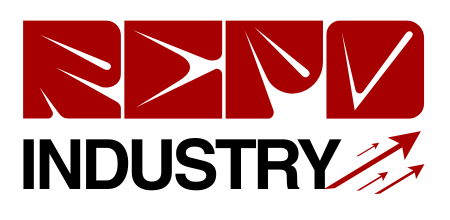Customs Trade Partnership Against Terrorism (CTPAT) is a CBP voluntary initiative aimed at promoting supply chain security. Membership of CTPAT enables firms to make trade security higher at the cost of decreased inspections, improved processing, and efficiency. To fully comply with the CTPAT requirement, companies should have sound security practices in their supply chain.
Taking a Risk-Based Approach
The most effective means of increasing supply chain security is by a risk-based methodology. This is undertaken by assessing threats and vulnerabilities in your supply chain and actively working to reduce them. Performing an in-depth CTPAT risk assessment will ensure businesses create a security plan aligned with CBP.
Steps to Implement a Risk-Based Approach
Perform Frequent Security Audits – Periodically audit security procedures, keeping within CTPAT guidelines.
Measure Supplier Compliance – Work closely with partners to make sure they follow security best practices.
Apply Advanced Screening Methods – Implement advanced tracking, monitoring, and screening of shipments.
Create Contingency Strategies – Maintain strong security processes that can respond to potential threats.
Improved Physical Security Practices
Physical security plays an important role in supply chain security. Businesses should ensure their warehouses, facilities, and transportation processes are secure.
Best Practices for Physical Security:
Controlled Access: Limit access to authorized staff only.
Surveillance Systems: Place CCTV cameras and motion detectors to monitor activities.
Secure Storage Areas: Utilize locked containers and tamper-evident seals to secure shipments.
Perimeter Protection: Secure fencing, lighting, and alarm systems to prevent unauthorized access.
Enhancing Cybersecurity within the Supply Chain
In the digital era, cybersecurity is as crucial as physical security. CTPAT members need to apply cybersecurity practices to secure sensitive data from damage.
Cybersecurity Best Practices:
Data Encryption: Protect all sensitive information with good encryption practices.
Multi-Factor Authentication (MFA): Make it a requirement that access to key systems involves more than one authentication measure.
Employee Cybersecurity Training: Train employees in phishing, malware risks, and the latest security methodologies.
Regular System Updates: Keep all software and systems up to date to avoid weaknesses.
Strengthening Personnel Security
Workers and business associates within the supply chain play a key role in security. Performing strict background checks, offering security training, and creating clear policies can prevent insider threats.
Personnel Security Best Practices:
Pre-Employment Screening: Perform background checks on all workers prior to hiring.
Ongoing Security Training: Offer regular CTPAT training to maintain compliance with security protocols.
Strict Access Control: Grant access according to job duties and conduct ID verification.
Employee Security Awareness Programs: Train employees regarding security threats and how to react to them appropriately.
Regular CTPAT Audits and Reviews
Constant adherence to CTPAT requirements, companies need to conduct regular internal audits and CTPAT annual reviews. These reviews enable detection of potential security weaknesses and verify that all safety procedures are current.
Key Components of a CTPAT Inspection
Facility Inspections: Routine inspections of physical security aspects and access points.
Supply Chain Verification: Make sure all the suppliers and logistics partners are CTPAT compliant.
Documentation Review: Adequate documentation of all activities related to security.
Incident Response Testing: Simulation of security violations and testing response plan efficiency.
Partnering with Trusted CTPAT-Compliant Suppliers
One of the most effective methods for enhancing supply chain security is through the use of CTPAT-approved suppliers. The partners already possess security protocols in place that comply with CBP standards, thus making compliance simpler.
Steps to Ensure Supplier Compliance:
Request Proof of CTPAT Certification – Make sure suppliers are security compliant to CTPAT standards.
Conduct Supplier Security Audits – Audit their security processes to ensure compliance.
Set Secure Communication Channels – Transmit vital information via secure mechanisms.
Engage in Continuous Monitoring – Regularly review and modify security processes with suppliers.
Technology Application for Supply Chain Security
Implementation of current technology can be utilized to reinforce supply chain security and enhance efficiency in CTPAT compliance.
Technology Solutions for CTPAT Compliance:
GPS Tracking: Track shipments in real-time to avert theft and unauthorized diversion.
Blockchain for Documentation: Utilize blockchain technology to document safe and tamper-free trade documents.
Automated Compliance Management Systems: Use software that ensures seamless compliance with CTPAT security standards.
Biometric Access Control: Use fingerprint or facial recognition for secure access to restricted areas.
Training and Continuous Improvement
CTPAT security is a continuous process that demands improvement on a daily basis. Investing in CTPAT training courses for employees and supply chain partners can assist in sustaining high-security levels.
Benefits of CTPAT Training
- Trains personnel on the latest security threats and how to prevent them.
- Ensures all personnel are knowledgeable about and compliant with CTPAT policies.
- Keeps businesses updated with evolving security issues.
- Provides a competitive advantage by showing commitment to security.
Final thoughts
Protecting your supply chain with CTPAT best practices not only protects your business from future threats but also optimizes operating efficiency and establishes stakeholder confidence. Through compliance with CTPAT regulations, businesses are able to upgrade their security rating, experience faster border clearance, and become preferred trade partners. Compliance with these best practices—physical and cyber security protocols, supplier compliance, and regular audits will ensure long-term international trade success.
For businesses ready to make maximum supply chain security a priority, putting top priority on CTPAT compliance is a key move towards a secure and safe trade network.











